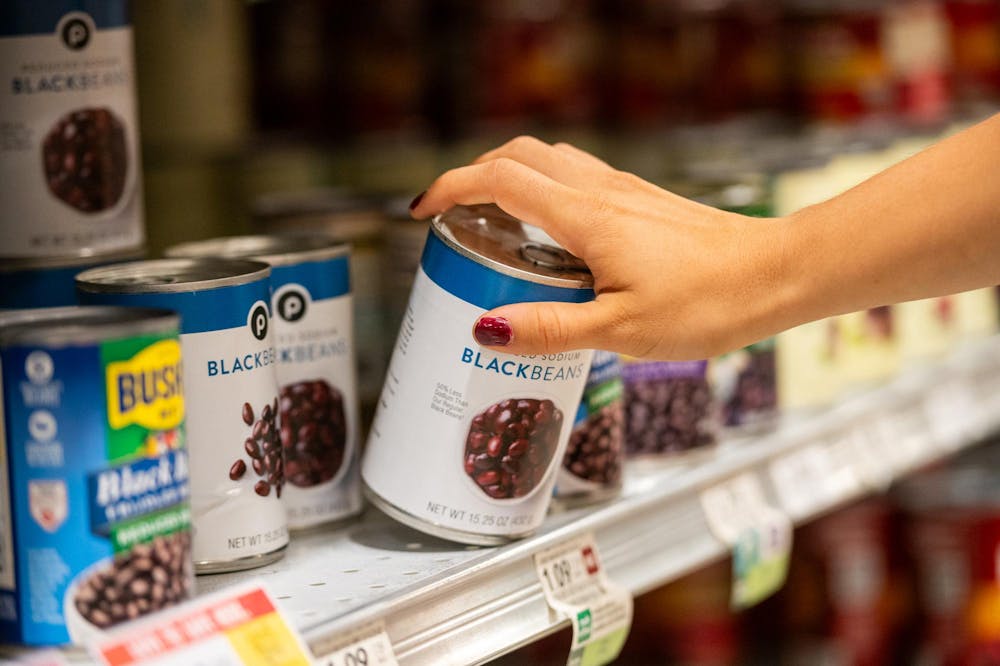This column is intended for general knowledge only and should not be considered professional medical advice. Always consult with a licensed care provider before making decisions related to your health.
“Protein-maxxing” has taken over the internet. Personally, my Instagram feed is full of questionable uses of Greek yogurt and cottage cheese, and that’s not to mention the addition of protein powder to literally everything. But I’d like to introduce you to a nutrient we should give equal attention — fiber.
Fiber is a carbohydrate found in plants that our bodies are incapable of digesting, meaning we just poop it out. You can find it in fruits, vegetables, whole grains and legumes. Importantly, a diet high in fiber may reduce your risk of developing Type 2 diabetes, colorectal cancer and cardiovascular disease, according to the 2015 Academy of Nutrition and Dietetics report.
These diseases are more than just buzzwords you see on cereal boxes; they pose serious threats to our health. In 2023, heart disease and diabetes were the first and seventh leading causes of death in the U.S., respectively. Colorectal cancer is the “third-leading cause of cancer-related deaths in men and the fourth leading cause in women”.
For people already diagnosed with one of these diseases, fiber’s protective effects extend beyond prevention. A 2023 meta-analysis with a collective sample of 3.5 million participants found that high fiber intake is associated with a significantly decreased risk of all-cause mortality, heart disease-related mortality and cancer-related mortality.
If you’re anything like my boyfriend who wants to understand how everything works, I can get technical.
While the human cells in our digestive track are not capable of breaking down fiber, the bacteria that make up our gut microbiome can. As our little bacterial friends living in our intestines break down this fiber, they release compounds that scientists think fight uncontrolled cell division — the biological mechanism of all cancers.
Fiber lessens intestinal transit time (aka how long poop stays inside your intestines before it leaves your body) and adds to the “bulk” of your stool, giving any potentially harmful compounds in your poop less time and space to wreak havoc on the delicate cells of your intestines.
Fiber also slows digestion, which helps control your blood sugar levels and reduce insulin sensitivity. Over time, insulin resistance can lead to prediabetes and Type 2 diabetes.
Fiber protects against heart disease by trapping cholesterol in your intestines, not allowing it to enter your blood stream. When cholesterol builds up in your blood, it groups up and forms blockages called plaques in your veins and arteries, which can eventually cause coronary artery disease, blood clots, heart attack and stroke.
The recommended daily intake of fiber for men aged 19-30 years is 34 grams and 28 grams for women in the same age group. The USDA reported over 97% of men and 90% of women do not meet recommended intakes for dietary fiber.
Here are some tips to increase your fiber intake.
If you’re looking for maximum efficiency, dragonfruit has the most fiber of all fruits, with 25 grams of fiber per cup. One avocado contains about 14 grams of fiber — and yes, avocados are fruits. Berries, guava, kiwis and mangos also have relatively high fiber content. One cup of green peas and an artichoke each contain about 9 grams of fiber, but if you’re picky like me, broccoli, potato, asparagus and corn are all also sources of fiber.
If you are fruit and vegetable-averse, you can pick up these Shameless Snack gummies on your next Target run. While I hate the name for its allusion to feeling shame over eating candy, the 26 grams of fiber and only 3 grams of sugar per serving make it redeemable. Plus, my roommate swears they actually taste good.
For your next Taco Tuesday, grab the Mission Carb Balance Whole Wheat tortillas with 30 grams of fiber each, which is 29 grams more than their regular flour tortilla. Eating whole wheat alternatives in general is a great way to increase your fiber intake.
In reality, you probably won’t hit your recommended daily intake every day — and that's okay. I definitely don’t hit 28 grams every day, but I try to be conscious about it, and I think you should, too.
Note: If you have been neglecting your fiber intake and want to start addressing it, make sure to add fiber into your diet slowly. Because of its effects on intestinal transit time, the physical “bulk” of your stool and digestion rate, a sudden drastic increase in fiber could cause diarrhea, constipation or abdominal discomfort.
Lara Caglayan is a 21-year-old UF nutritional sciences senior.






